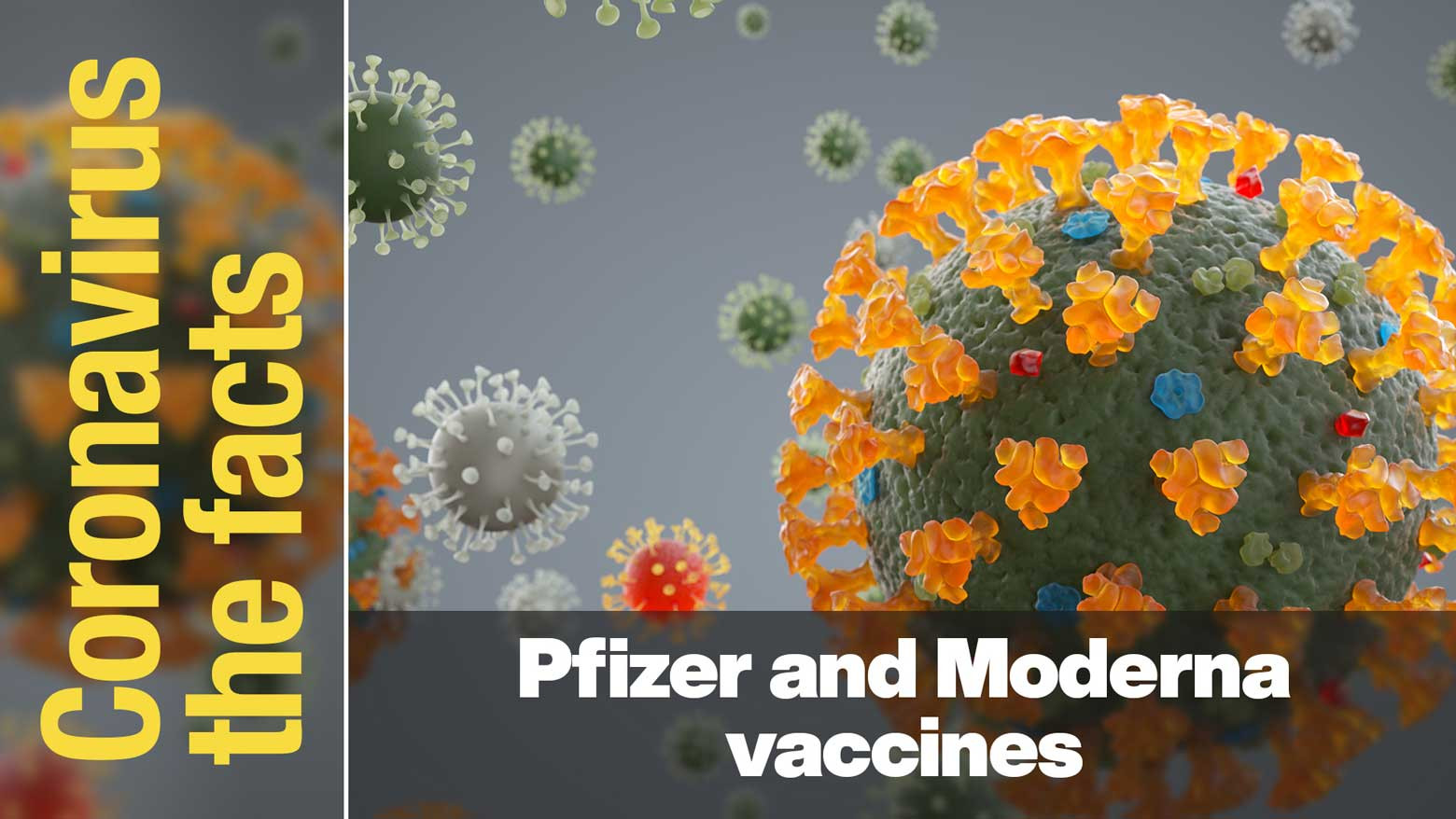This is part 96 of our coronavirus FAQ. Click here to read other installments: #Coronavirus the facts. Find the latest information and answers from experts on everything COVID-19.
The Japanese government is currently rolling out coronavirus vaccines produced by US companies Pfizer and Moderna. Both shots are based on messenger RNA, a type of genetic material, which is why they are known as "mRNA vaccines." The two vaccines have much in common but also key differences.
The following information is from Japan's health ministry, the US Centers for Disease Control and Prevention, as well as Pfizer and Moderna.
Intramuscular injection
Both vaccines are administered via intramuscular injection, a technique that delivers the shot to muscles underneath our subcutaneous fat. The needle is inserted at a right angle into the upper part of the arm, close to the shoulder. Experts say this technique allows the body to absorb the vaccine more quickly than through hypodermic injection between the skin and muscle, which is used for the flu vaccine in Japan.
Number of shots and time between doses
The Pfizer vaccine is administered in two doses, with the second shot usually given three weeks after the first. The Moderna vaccine is also administered in two doses, with the second one usually given after four weeks.
Efficacy
Both vaccines were very effective in clinical trials and have since demonstrated high efficacy in the inoculated population.
In clinical trials, the Pfizer vaccine led to a 95% decreases in symptomatic cases, and the Moderna vaccine resulted in a 94.1% reduction.
Efficacy against variants
Both vaccines have been found to be highly effective against the variant first identified in the UK which is now spreading across Japan and many other countries.
A paper published by Pfizer and its partners says that a laboratory test showed their vaccine to be just as effective in neutralizing the variants first detected in the UK and Brazil. It says the vaccine provided "sufficient" protection against a variant first detected in South Africa.
Moderna and its partners say their vaccine has been shown to work just as well against the UK variant as against earlier strains. It appears to be less effective against the South Africa and Brazil variants, but Moderna says the levels are still sufficient to protect against them.
Potential side effects
A Japanese health ministry study group looked at side effects of the Pfizer vaccine and released their findings on April 30. They said 23.2 percent of people experienced fatigue after the first dose, with the figure rising to 69.6 percent after the second dose; 21.2 percent experienced headaches after the first dose, and 53.7 percent after the second; 3.3 percent reported a fever of 37.5 degrees or higher after the first dose, and 38.4 percent after the second.
The US Centers for Disease Control and Prevention released results of clinical tests involving the Modern vaccine and people aged 18-64. The data shows that 38.5 percent experienced fatigue after the first shot, while 67.6 percent did so after the second; 35.4 percent had a headache after the first shot, and 62.8 percent after the second; and 0.9 percent developed a fever after the first shot, and 17.4 percent after the second.
Storage requirements
Both vaccines contain mRNA, which is unstable and can be easily damaged and so require stringent storage measures.
Japan's health ministry says the Pfizer vaccine can be kept at temperatures between minus 25 and minus 15 degrees for up to 14 days. After it is thawed in advance of injection, the vaccine has to be refrigerated at between 2 and 8 degrees and used within 5 days.
The Moderna vaccine should be held in freezers at temperatures between minus 50 and minus 15 degrees. At medical facilities, it can be kept in refrigerators at temperatures between 2 and 8 degrees for 30 days.
The information is accurate as of May 27, 2021.
